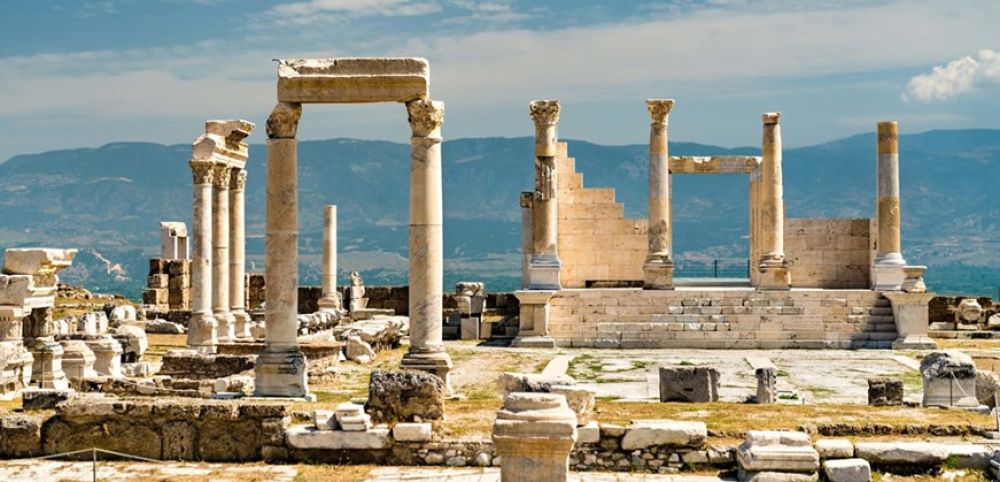

The ancient city of Laodicea, located near modern-day Denizli in Turkey, is a site of historical and archeological importance that has played a significant role in the region's tourism. Established by Antiochus II Theos in the 3rd century BC and named after his wife Laodice, the city flourished under the Roman Empire and is mentioned in the Bible as one of the Seven Churches of Revelation.
Laodicea quickly rose to prominence due to its strategic location on trade routes and its successful textile and banking industries. The city was also known for its school of medicine and an eye-salve made from Phrygian stone. Despite suffering from earthquakes, Laodicea was rebuilt each time, reflecting its economic resilience and importance.
The site fell into ruin and was largely forgotten until the late 19th century when archaeologists began to uncover the city's past. Excavations have unveiled numerous significant finds, such as the Theater, Stadium, Odeon (Council Chamber), and the remnants of a sophisticated water supply system that includes the largest ancient water depot discovered in Anatolia.
Laodicea's proximity to the famous Pamukkale, with its thermal springs and white travertine terraces, has historically overshadowed its significance. However, increased efforts to promote Laodicea, along with the continued archaeological work uncovering new sights like the Church of Laodicea, have boosted visitor numbers.
Modern facilities cater to tourists' needs, with informative placards and a museum to display artifacts. The site has been made more accessible with walkways and signage, allowing visitors to understand and appreciate the ancient city's context.
In recent years, there has been a trend towards sustainable and educational tourism, with visitors seeking to engage more deeply with historical sites. Laodicea is perfectly positioned to benefit from this trend, offering a less crowded and more authentic experience compared to better-known destinations.
Events such as light shows and cultural festivals have also started to include Laodicea in their programs, introducing the site to a wider audience and ensuring its place on the historical tourism map of Turkey.
The Turkish government's ongoing sponsorship of excavations and tourism infrastructure at Laodicea indicates that the future looks bright for this ancient city. As knowledge of its importance grows, so too will its role in the region's tourism industry, offering a fascinating window into the past for visitors from around the world.